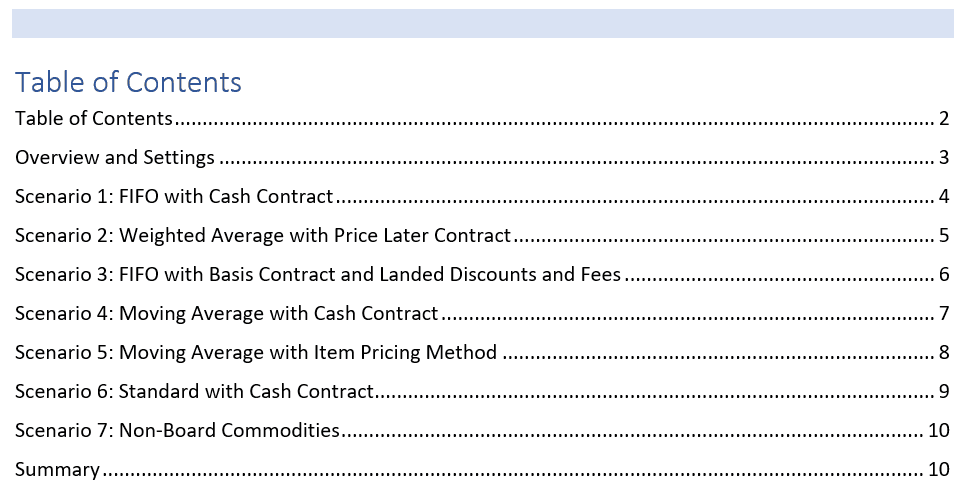Commodity Accounting Perpetual Inventory Setup and Process Flows in Levridge
Read the high-level overview below or read the full guide here: Perpetual Inventory and Commodity Accounting
Grain processors may want to track the cost of grain inventory though the commodity into the manufactured good. As such, they will account for the cost of the grain through some of the perpetual inventory methods supported by Dynamics 365 and Levridge:
- FIFO
- Standard
- Moving average
- Weighted average
Parameters
Together with a few more parameters, the system will make inventory adjustments or postings as needed. Let’s look at each of these parameters that impact what the process will do:
- 1On the commodity released item, the Item model group determines the inventory model: Standard, FIFO, Moving average, or Weighted average. (There is also LIFO, LIFO date and Weighted average date options but those are not currently supported by Levridge for perpetual inventory).
- On the commodity released item detail form in the Commodity fast fab, the ‘Perpetual inventory’ must be set to Yes if you want the adjustments to cost based on the contract price or landed discounts/fees. If it is set to No the system will not post adjustments.
- On the commodity released item detail form, the ‘Use board price on contracts’ in the Commodity fast tab governs if the item should have both board and basis on contracts (if set to Yes) or just net price (if set to No).
- On Commodity accounting parameters in the Commodities tab, the ‘Pricing method’ has 2 options: Item price or Bid sheet. When posting inventory, if the ticket is applied to a purchase contract that is not fully priced, the system will look to this parameter to determine where to get the missing pricing components. If set to ‘Bid sheet’, the system will look for the board price and/or basis depending which is not on the contract. If it is set to ‘Item price’ the system will use the cost from the commodity on the released item detail form.
- You can set ‘Landed cost’ = Yes on discounts and/or fees (Commodity accounting > Setup > Discounts & fees > Discount tables or Fee and charges).
- Contract type: Basis, Cash, Futures, Minimum price, or Price later.
- The posting accounts on the commodity released item (Manage costs action pane on the Released item select Posting in the Set up group). If using the inventory model of Standard, the system will use the ‘Purchase price variance’ on the Standard cost variance tab which will offset to the ‘Inventory expenditure, profit’ on the Inventory tab when the settlement is confirmed. This is also the place where the inventory adjustment pulls the posting accounts from when the ticket is applied to the purchase contract. For an increase in inventory, it will use the ‘‘Inventory expenditure, profit’’ and offset with ‘Inventory receipt’. When posting the shrink (negative inventory) it will use the ‘Inventory expenditure, loss’ and offset with ‘Inventory issue’. All of which can be found on the Inventory tab.
The system will “true-up” any differences in cost using the contract price or landed costs when the settlement is confirmed. So, if tickets are applied and unapplied to contracts before they are settled, the system will use that first contract price as the cost and won’t make the adjustments to inventory cost until the ticket is settled. This reduces the postings and adjustments to inventory when the settlement price is final. It will also back out the adjustments if the settlement is voided.
Inventory models
Levridge commodity accounting processes differently depending on the inventory model when using perpetual inventory but all occur when the ticket has a confirmed settlement. To summarize:
FIFO and Weighted average: an adjustment to the inventory transaction is posted.
Moving average: the original inventory adjustment is reversed, and a new transaction is posted.
Standard: a general ledger transaction is posted for the difference.
Continue reading to learn more and walk through specific scenarios: Perpetual Inventory and Commodity Accounting
